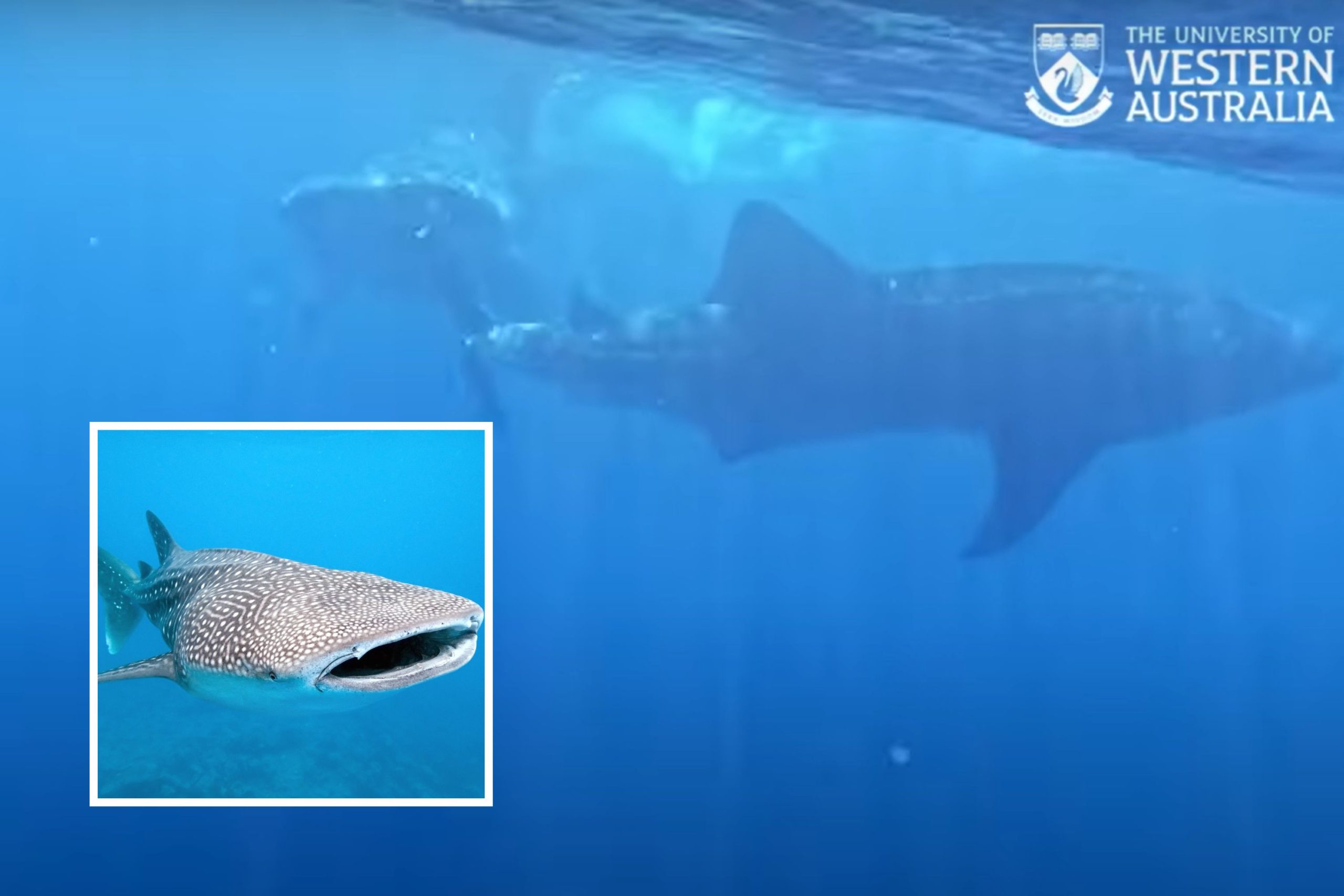
A massive species of endangered shark might be kinkier than we first thought, scientists have found.
In rare video footage, a male whale shark has been spotted biting at his female partner during courtship. Before now, we knew very little about the secret sex lives of the world’s largest fish, which is listed as endangered on the IUCN Red List.
“Very little is known about the reproductive behaviors of whale sharks,” the researchers wrote in a paper published in Frontiers in Marine Science.
“Our knowledge of adult whale sharks, particularly their reproductive and behavioral ecology, is largely derived from chance observations of sharks caught by fisheries or from animals held in aquaria.”
They spotted this rare behavior at Ningaloo Reef off the coast of Western Australia, which is one of only two locations where whale shark courtship behaviors have been spotted in the past.
The video, taken during an expedition to the reef in May 2024, also shows the male following the female before nibbling at her.

Christine Barry, Murdoch University / University of Western Australia / ISTOCK / GETTY IMAGES PLUS
In the paper, the researchers describe how the male swam 6 to 10 feet behind the female before opening its mouth and lunging toward her.
“The male shark increased its swimming speed and lunged again at the caudal fin of the female, this time making contact and briefly biting the tail,” they wrote.
Interestingly, following and biting behavior did not result in the pair actually mating. However, the scientists suspect it was indeed courtship behavior due to its similarities with the courtship rituals of other shark species.
“Following and biting are common copulation behaviors in other species within the subclass of cartilaginous fish that the whale shark belongs to,” study co-author Christine Barry, a Ph.D. candidate at Murdoch University’s Harry Butler Institute and the Australian Institute of Marine Science, said in a statement.
“This is also consistent with previous reports by fishers recounting behaviors they’d observed out on the water of sexually mature males towards females at different aggregation sites.”
During the scant other observations of whale shark sexual behavior, males were spotted following the females around in a similar manner before positioning themselves belly-to-belly beneath the female.
“Although it was possible that mating could have occurred after the sharks that we followed descended to deep water, the female appeared to actively resist the attention of the male,” the researchers wrote.
This may have been because the female was not yet fully sexually mature, as her smaller size could indicate.
Whale sharks (Rhincodon typus) are the largest fish in the world, growing as much as 40 feet or more in length. Despite their size, they are incredibly docile and only feed on plankton, small fish, and other tiny organisms. They use a process called “ram filter feeding,” swimming with their mouths open to collect food, and “active suction feeding,” drawing water into their mouths and expelling it through their gills.
Whale sharks are found in warm tropical and subtropical waters worldwide, but very little is known about their mating and reproduction due to their elusive nature. These findings of the biting behavior are hoped to help researchers understand this species’ courtship rituals better and why there are sex biases in their populations at several sites.
“At Ningaloo Reef, and many aggregation sites around the world, males outnumber females with a ratio of 1 female to 3 males,” Barry said.
“This could explain why female whale sharks may be avoiding aggregation sites. Particularly for juvenile female sharks, the energetic costs of unwanted attention from males could imply a reason for strong male biases.”
Do you have a tip on a science story that Newsweek should be covering? Do you have a question about whale sharks? Let us know via [email protected].
References
Barry, C., Lester, E., Doane, M. P., Ferreira, L. C., Thums, M., Gleiss, A. C., & Meekan, M. G. (2025). Love bites? Pre-copulatory behaviours of whale sharks (Rhincodon typus) at Ningaloo Reef, Western Australia. Frontiers in Marine Science, 11. https://doi.org/10.3389/fmars.2024.1507072





